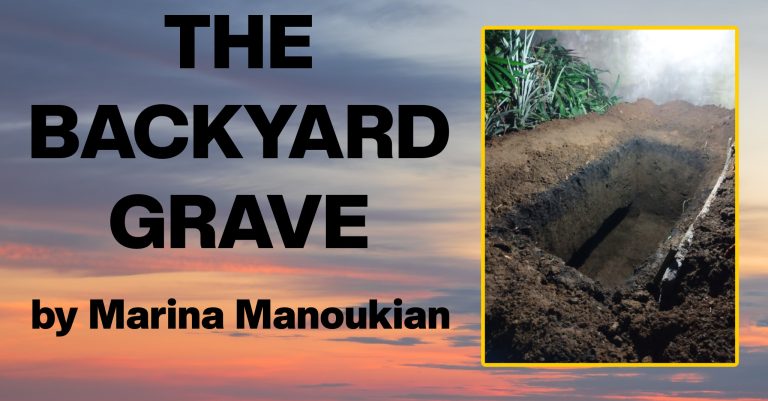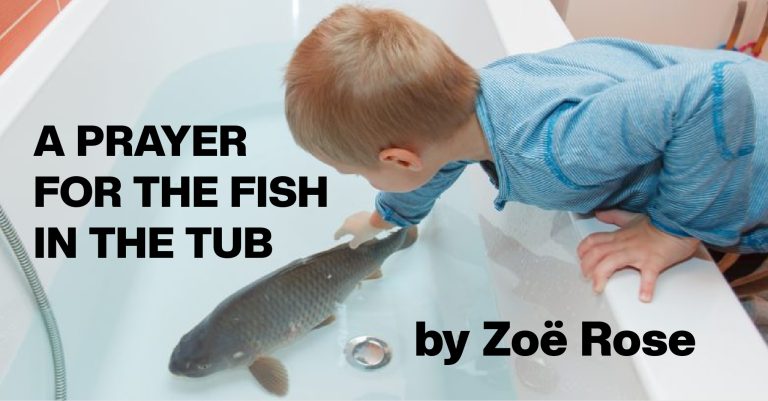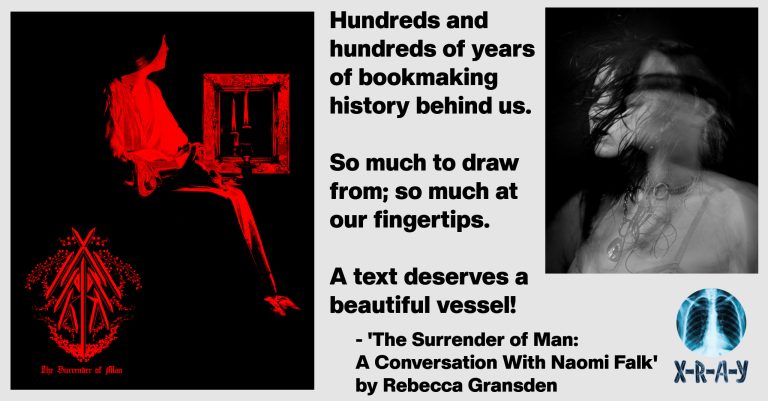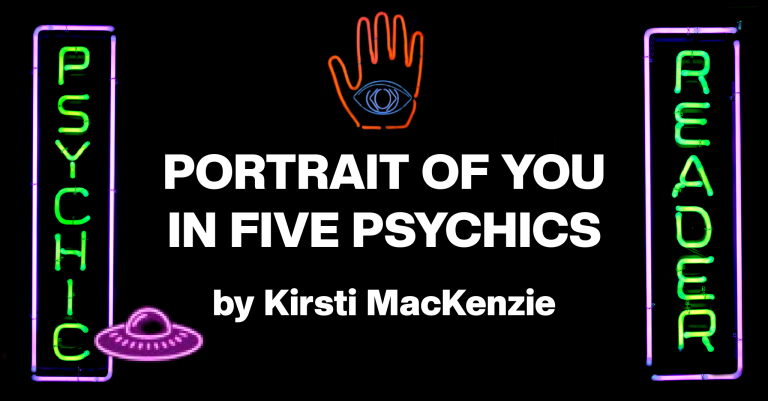October 13, 2025
“That’s wonderful, Sam,” the voice says, cooing. “May I call you Sam?”The voice is low, mellow, musical. The English it speaks is careful, cultured, unhurried, seductive (or so Sam thinks; he’s become a connoisseur over the years). Its tone is polite and comforting with just an edge of anticipation. Normally, this voice has rarely been given the freedom to speak so much, to reel off so many carefully-edited chunks of information. It senses an ultimate victory.“Sam, or Sammy,” Sam says.“That’s wonderful, Sam,” the voice repeats. “Now, all you have to do—”“My mother used to call me Sammy,” Sam says. “And both my grandmothers. But not my grandfather on my mother’s side: he called me Ig, short for Iggy, I dunno why. My grandfather on my father’s side didn’t call me anything. He croaked long before I was born. I didn’t know him, obviously. Although I did dream of him, once. I recognized him from the old Polaroids, and in my dream he sort of had a static, faded appearance, and he approached me while I was in a library, the first library I remember, torn down long ago, he just sort of slowly came my way between the stacks, walking like he was in a swimming pool, and he called me Nathan, which is my father’s name, and I told him so, and boy was grandpa confused, he was in the wrong dream, which is absurd, but I don’t look anything much like my father, so I don’t know why grandpa called me Nathan, but then again I suppose because he never met me he didn’t know I’m Sam, and I felt very sorry for him, it must have taken a lot of effort to show up in a dream only to discover you’ve screwed up, that you’re in the wrong damn dream. My father, by the way, calls me Samuel.”A moment as the voice realizes Sam has finished.“That’s wonderful, Sam,” the voice says a third time, hesitant but pushing forward. “Now, all I need you to do is send the two hundred and eighty-five dollars to the address I’m about to give you, and once we’ve received it…”Sam, calm, listens, writes, nods. He worries about the dead grandfather he never met, worries that his grandfather is still wandering from dream to dream, looking for his son and never finding him.Sam sends the money.The next time he orders a bacon cheeseburger, Sam asks that the pickles and lettuce be left off. This is the first time he has done this, rather than pick off the pickles and lettuce later. “I don’t seem to be digesting them properly,” he tells the kid taking his order. “I love them, but now they don’t love me. It’s like I haven’t even eaten them. They just slide through me, and it’s disgusting. Same goes for the fried mushrooms. Next morning they’re there, swimming in the bowl, shorn of breading, otherwise intact. I don’t understand. Anyway, the burger comes with fries, right?”Sam calls his doctor, makes an appointment. He goes to the appointment, is early, brings a stool sample, pisses in a cup, opens his veins for an armada of blood tests.He follows up with a dietician, buys over-the-counter probiotics on his own initiative. He switches from table salt to sea salt. He avoids milk. He buys four bottles of sparkling Moscato D’Asti because it’s cheaper to do so in bulk with his CVS rewards membership, and is carded at the register. “I’m forty-six,” Sam tells the checkout lady. “No, you’re not,” she says, looking at his ID, “you’re forty-four.” Even though he is taken aback by this—who in their right mind goes around thinking they’re older?—Sam laughs and says, “Well, I’m thinking ahead,” and gets the hell out of there, bottles clanking in the inadequate plastic bag which is only seconds away from breaking.“Now, what this means,” the voice says, rolling right along, “is you are not charged a single penny for the first two months, and after that it’s only a nominal weekly charge, and you won’t be bothered by reminders, it’s all done automatically. With me so far, Mr. Riboste?” This voice is strong, clear, aware of its teeth, exudes confidence and knowledge. The voice hasn’t asked him if it’s all right to call him Sam, although Sam has been waiting to give permission.Sam nods, with no one to see him. “Still with me, Mr. Riposte?” the voice says.“One hundred and ten percent,” Sam says, “although I know there can’t be more than a hundred percent of anything, unless I’ve been misled. I’ll never forget the way Mr. Klebber, my fifth grade teacher, tried to prepare us for fractions. You sound just like him, only without the smoker’s rasp. A couple years ago I saw him at the bar of a strip club which is now a Burger King. I remember that he sat at the bar, his back to the strippers, nursing some tall drink in a frosted glass, and I never understood why anybody would go to a strip joint and not look at the strippers, but then I saw that the wall behind the bar was nothing but mirror, so you could see the action, only in reverse and a trifle warped. I said hello to him, but he didn’t know me, and when I reminded him that I had been his student back in the day, he only made one of those ‘pffft’ sounds when I mentioned the school, and he didn’t have anything further to say to me, just went back to clutching his drink, which had an umbrella and cherries on a spear, and watching the reflection of the stripper who, at the time, was my Aunt Patti on my mother’s side and was only ever invited to the big yard parties, nothing intimate like Christmas. She’s still around, although she’s not stripping anymore, which is probably all for the best, considering she’s north of seventy.”“That’s great, Mr. Riboste—”“Call me Sam.”Sam learns there is nothing wrong with him, but his doctor suggests he might be under a lot of stress or might be developing an ulcer. Sam doesn’t respond. His doctor presses the point. “I’m under no stress at all,” Sam says. His doctor says okay and hurries off to be late for his next patient.Sam’s sister asks him what happened with Uncle Herman’s electric trains because she wants them for her son, Toby, who hasn’t been born yet. Sam says, “Ask mom.” His sister tells him that Mom was the first person she asked and that Mom said Sam had taken them when he moved out. Sam denies this. “Where would I put all that junk?” Sam asks. His sister has never visited him; she has no idea of the cramped dimensions of his dump. “All that stuff is probably still in the basement,” Sam says. His sister says if the trains were still in the basement, Mom would have told her. “Go over and look anyway,” Sam says. His sister says he should go over and look, he’s closer. Sam reminds her once again that be that as it may, that yes he is closer to them, distance-wise, he is no longer closer to them, emotional-wise, even though he’s still closer than his sister, and besides, all those trains that Uncle Herman left behind were from the early Fifties, and that her future son, if ultimately desirous of fun in the form of scale-model trains that ran around in a loop, would probably want the latest models and not a pile of heavy junk that was so old its machinery growled whenever they were pressed into action. His sister says she doesn’t know why she calls; she can’t talk to him.“Everything you’re doing is perfect, Sam,” the voice says, aggressive and bright. “Now just go ahead and click on the link I just sent you.”Sam does as he’s told. “And now?” he asks.“Do you see the attachment, Sam?”“Yup.”“Go ahead and download the attachment, Sam.”Sam downloads, waits. A rainbow wheel spins. He and the voice wait for the wheel to disappear.“I hope you aren’t feeling pressured in any way, Sam,” says the voice. Bright, aggressive, but not bullying. The voice of the younger brother Sam always wanted.“I’ve always been good at following directions,” Sam says, “except for this one time when I just couldn’t for the life of me figure out how to put up a pup tent, and I think that was because it required two people to put it together and there was only me. This was at a camping trip, my first, I was really young, during college, I think junior year, a bunch of us drove across the state to a place just along the river, the camp sites high up, you had to drive a long, curving road that wound its way up, and I had to drive separate because my friends and their girlfriends had loaded up the van with all sorts of stuff, and they were busy putting up their tent, a real deluxe thing, it slept six, but they had suggested I not bunk in with them because, well, at some point they were going to get intimate and they didn’t think I’d want to suffer through something like that, so there I was with this little tent I’d picked up last minute, cheap, couldn’t figure it out, and the little hammer that was included wasn’t much better than, like, a jeweler’s hammer, tink-tink-tink, not doing much of anything, they were all laughing at me, tink-tink-tink, then they weren’t laughing because, as you can imagine, it got to be annoying, and then later there was this big storm, you could hear it coming through the trees before it hit, a great whooshing, and my tent blew away, I ended up sleeping in my car.”“You didn’t deserve that, Sam,” the voice says. “Now go ahead and open that attachment.”Sam sees her when he was certain he would never see her again. She is there, handling plates, telling a young salesperson that she’s just looking. She hasn’t seen Sam.Sam considers making his presence known to her. “Well, this is a nice surprise,” he imagines himself saying. To which he imagines her saying, “Oh my God, I’ve been thinking of you,” while Sam says, “You have?” while she says, “Quite a lot, actually,” while Sam says, “Good things, I hope,” while she says, “There are no bad things,” and then he imagines them telling each other how they’ve been for the past eighteen years, what they’ve been doing, how each other hasn’t changed at all, and she says, “You know, I’ve always wanted to tell you that I made a mistake,” while he says nothing, not maliciously, but he hopes he knows what’s coming, and she goes on, “The thing is, Sam, you’re the love of my life, and I didn’t know it then, or I did know it but was too afraid of my feelings, they were that strong, so I ran, and I really, really hope you can forgive me.”None of this happens. Sam watches her pick up a box of stemless wineglasses, tuck it under her arm, and head for the closest register. As she passes, she sees Sam, but there is no recognition in her eyes, he could be one of the displays, she’s on her way, no doubt to the man she told him, long ago, that she was going to marry, the man that wasn’t even there to lug her wineglasses.“You need to act quickly, Sam,” the voice says. This voice reminds him of the elder pastor from his church who baptized him and who later, when Sam was fresh out of college, listened to Sam’s ongoing concerns about life and love and trauma without giving so much as spiritual advice before hastening off to a Stewardship Committee Meeting. “But you’ve been so good at acting quickly,” the voice continues. “I don’t want you to feel pressured, however, Sam.”“I’m good,” Sam says.“Love it. I know it sounds too good to be true, Sam, or maybe you think it’s too true to be good, ha ha ha.”“When I was little boy,” Sam says, “First Grade, I went out during recess and I went on the slide, but my foot got caught in the side rail, my left foot, I was wearing blue sneakers with white laces, I can remember it like yesterday, and the kid behind decided to slide down anyway and I went over the side, I was dangling by my left leg, looking straight down at the asphalt, nobody noticed, and I don’t know why I didn’t call out, maybe I was certain that I was seconds away from my skull busting open like a ripe melon, but this other kid, Brady Sorrentino, was suddenly below me with his arms outstretched, telling me he’d catch me, he was a bigger kid, he’d been held back a year, not the brightest kid but real sweet, very handsome, the girls all had crushes on him at one time or another over the years, and there I was swinging from that slide like a piñata, certain that Brady wouldn’t catch me but hoping he would, and still nobody, none of the teachers, none of the other kids, had noticed my peril, but there was Brady’s sincere, trusting face, Brady reaching up to me, and I didn’t fall, I hauled myself back up onto the slide, slid down, got up, walked away as best I could, and by ‘best I could’ I mean limping, and I never went back on that slide, and when I turned to thank Brady for the help he had offered, he was already off kicking a ball across the playground, and I never thanked him, not properly, not at all, because he hadn’t saved me, and I didn’t want to embarrass him in front of the other kids by thanking him for being so brave and coming to my rescue. Years later I heard that Brady had gone to jail for something, I don’t know if I ever heard for what, and he might still be in jail, but I don’t know.”“You can pay with gift cards or cryptocurrency, Sam,” the voice says, “and I, for one, am so glad you didn’t take a header off that slide.”“It sucks, after nineteen years,” Sam’s boss tells him, “but what can you do?”“Twenty-one,” Sam says.“Twenty-one what?”“Years.”“Is that so? Huh. Well, it doesn’t matter, because we, as you know, don’t have a severance package, although in certain cases leadership will decide to maybe throw in a month’s pay, even two months’ pay.”“What’s leadership giving me?”“I said in certain cases, Jim.”“Sam.”“Huh? Oh, yeah. Sam. I always got that wrong, it sounds so much like Jim. The things our minds do, right? I just need you to sign there at the bottom, and you can just leave your badge on my desk.”“How was your day, Sam?” the voice asks. Sam is almost certain he’s heard this voice before. It is like satin. It is like sunshine. He tells the voice how his day was.“Did you sleep okay, Sam?” Sam says he assumes he did because he felt rested, if not refreshed, when he woke up.“What did you eat for dinner, Sam?” Sam says he wasn’t hungry, but he’d had a can of smoked oysters and a bag of raisins for lunch.“I love talking to you, Sam,” says the voice. “I love talking to you even more than I loved talking about my husband, who died, if you remember me mentioning it. I love the fact that you were so sorry to hear that even when you didn’t know the man. I love that you’re sincerely interested in my child, in my child’s health and welfare, and that you think that my child going to school in another country was a smart move even considering our little problem right now. I love that you’re here for me, Sam, or there for me, and I’m here for you, Sam. I don’t have anyone, Sam, no relatives, no friends. Just you, Sam. You listen, you tell me such wonderful things about yourself, you make me feel like you’re right here in the room with you, Sam.”Sam feels warm, despite the heat being shut off. He doesn’t just feel warm; he feels engulfed in radiance. He listens to the voice and feels himself looking up at a small boy hanging from his left foot from a slide, he feels himself smiling, a forced smile of encouragement; no, a genuine smile of responsibility, a smile encouraging trust, the small boy so close Sam can almost reach him and release him, take him away in his arms.
Read More » 









